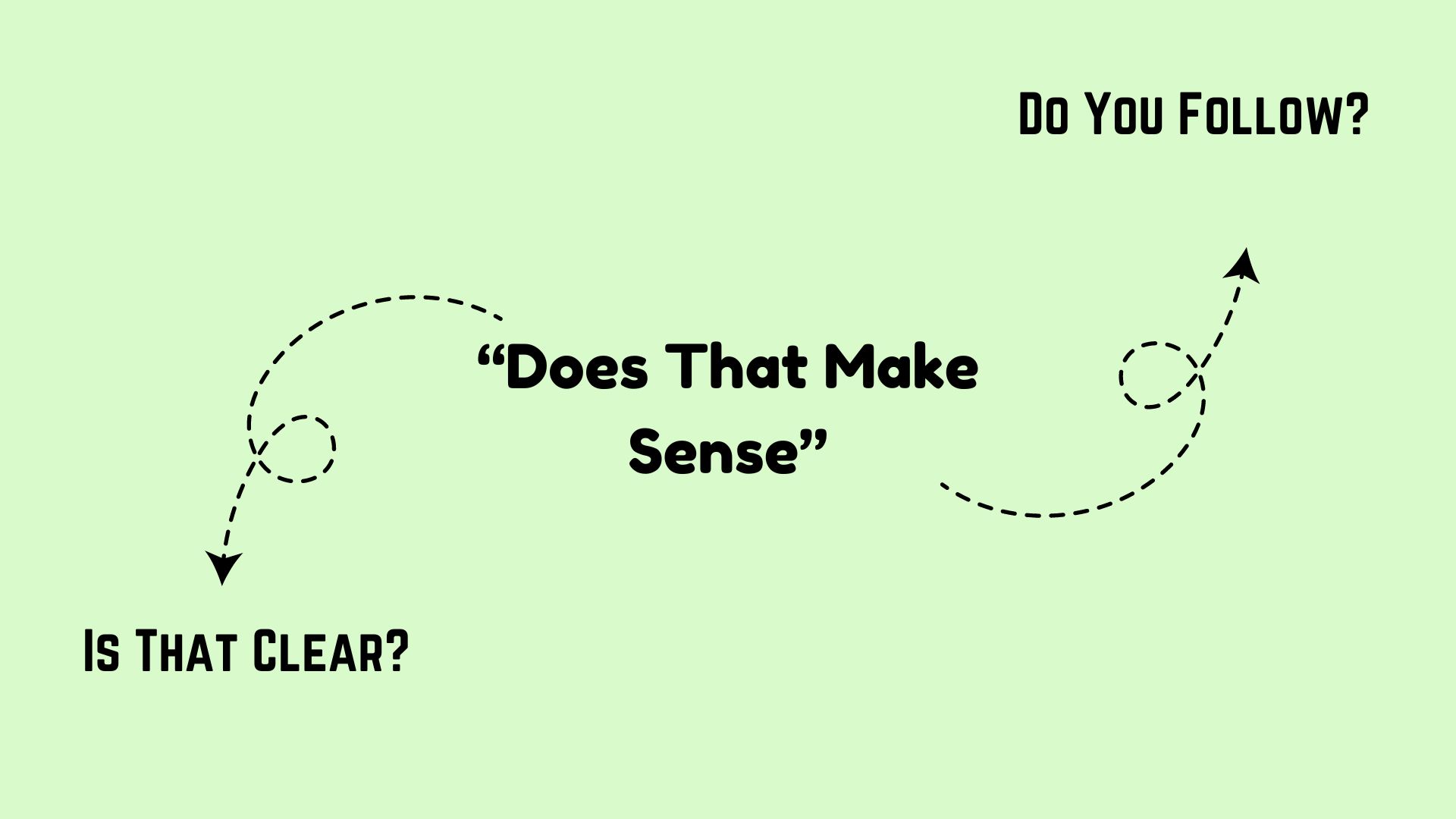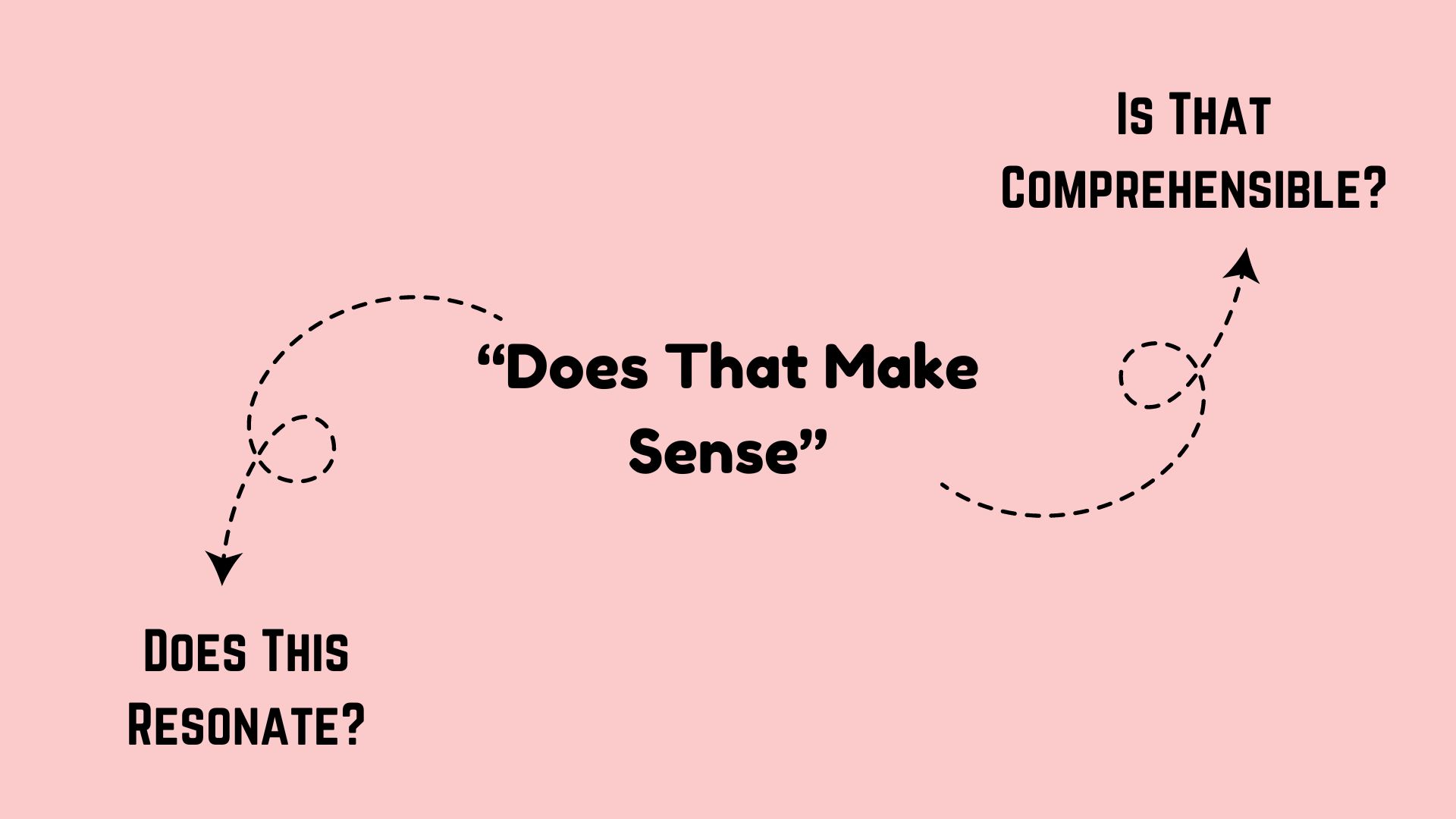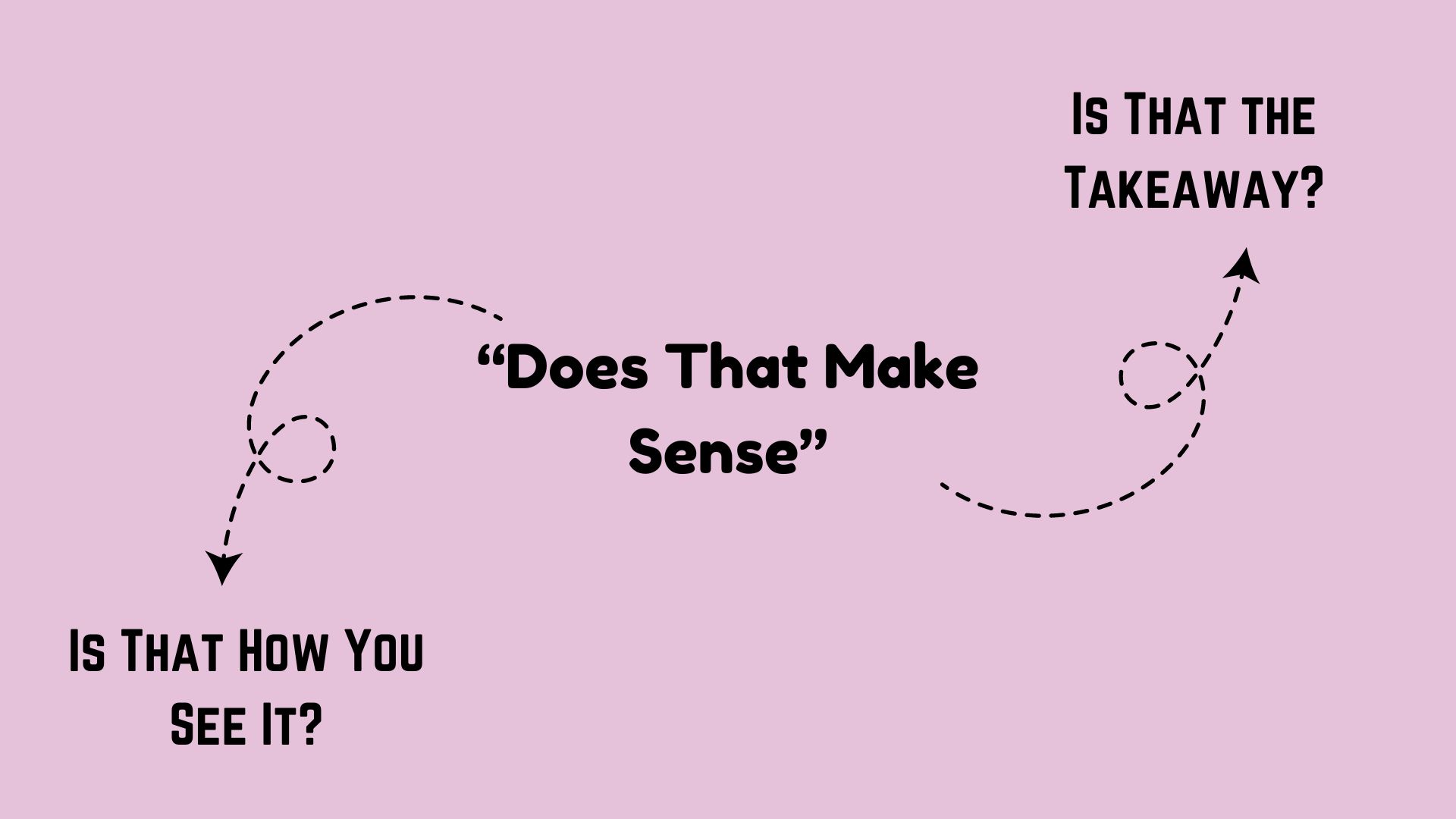In professional communication, ensuring clarity and understanding is key. Here are 23 ways to ask “Does that make sense?” in a professional context, each with an example and specific use case.
1. Is That Clear?
Example: “Is that clear for everyone on the team?”
Use Case: When confirming that your explanation has been understood.
2. Do You Follow?
Example: “Do you follow what I just explained?”
Use Case: When checking for understanding during a discussion.
3. Is That Understandable?
Example: “Is that understandable, or would you like me to elaborate?”
Use Case: When inviting questions about a complex topic.
4. Any Questions So Far?
Example: “Any questions so far about the new process?”
Use Case: When encouraging feedback during a presentation.
5. Does That Sound Clear?
Example: “Does that sound clear, or should I clarify anything further?”
Use Case: When checking for clarity after providing information.

6. Are We Aligned?
Example: “Are we aligned on the next steps?”
Use Case: When confirming that everyone agrees on the plan moving forward.
7. Is This Clear?
Example: “Is this clear to you, or do you need more details?”
Use Case: When asking if additional information is required.
8. Do You See What I Mean?
Example: “Do you see what I mean about the importance of deadlines?”
Use Case: When seeking affirmation of understanding regarding a specific point.
9. Does This Resonate?
Example: “Does this resonate with what you’ve experienced?”
Use Case: When checking if your message aligns with the audience’s experience.
10. Is That Comprehensible?
Example: “Is that comprehensible, or would you like a different explanation?”
Use Case: When ensuring that your explanation is easy to grasp.

11. Are You Following Along?
Example: “Are you following along with the points I’m making?”
Use Case: When gauging whether someone is keeping up with the discussion.
12. Does That Clarify Things?
Example: “Does that clarify things for you?”
Use Case: When asking if your explanation has resolved confusion.
13. Do You Have Any Thoughts on This?
Example: “Do you have any thoughts on this approach?”
Use Case: When inviting input and checking for understanding simultaneously.
14. Is That What You Expected?
Example: “Is that what you expected based on our previous conversations?”
Use Case: When aligning expectations with your audience.
15. Does That Align with Your Understanding?
Example: “Does that align with your understanding of the situation?”
Use Case: When confirming whether your explanation matches someone else’s perspective.

16. Can You See How This Works?
Example: “Can you see how this works in practice?”
Use Case: When illustrating a concept and checking for comprehension.
17. Is That the Takeaway?
Example: “Is that the takeaway you’re getting from this discussion?”
Use Case: When ensuring that the main point is understood.
18. Are We on the Same Page?
Example: “Are we on the same page regarding the timeline?”
Use Case: When confirming mutual understanding about a plan or schedule.
19. Does This Make Sense to You?
Example: “Does this make sense to you, or should I explain it differently?”
Use Case: When seeking confirmation of understanding while remaining open to feedback.
20. Is That How You See It?
Example: “Is that how you see it, or do you have a different perspective?”
Use Case: When inviting a response that checks for agreement or disagreement.

21. Are There Any Points That Need Clarification?
Example: “Are there any points that need clarification?”
Use Case: When encouraging questions to ensure everything is understood.
22. Does This Fit With Your Expectations?
Example: “Does this fit with your expectations for the project?”
Use Case: When aligning your message with someone’s goals or needs.
23. Can I Provide More Information?
Example: “Can I provide more information to help clarify this?”
Use Case: When offering additional details to ensure understanding.
These alternatives provide various professional ways to confirm understanding, promoting clear communication and encouraging dialogue in various contexts.

